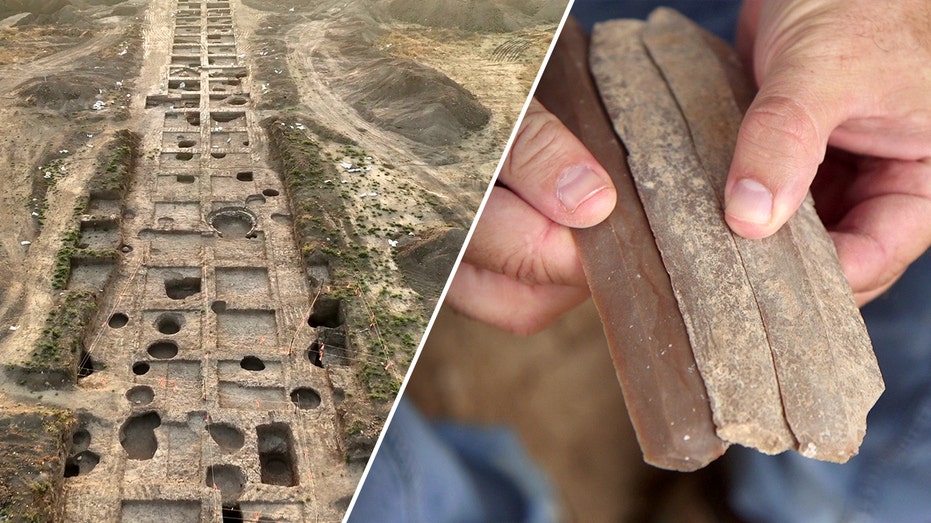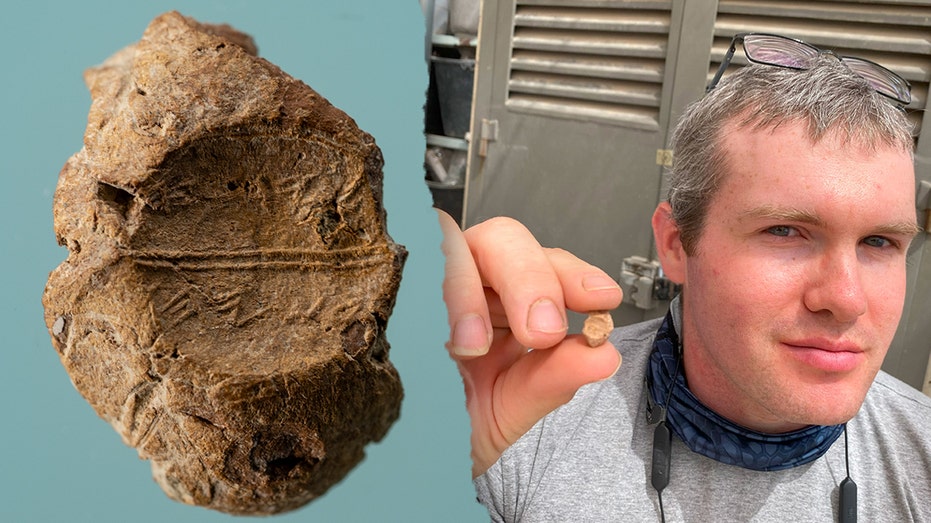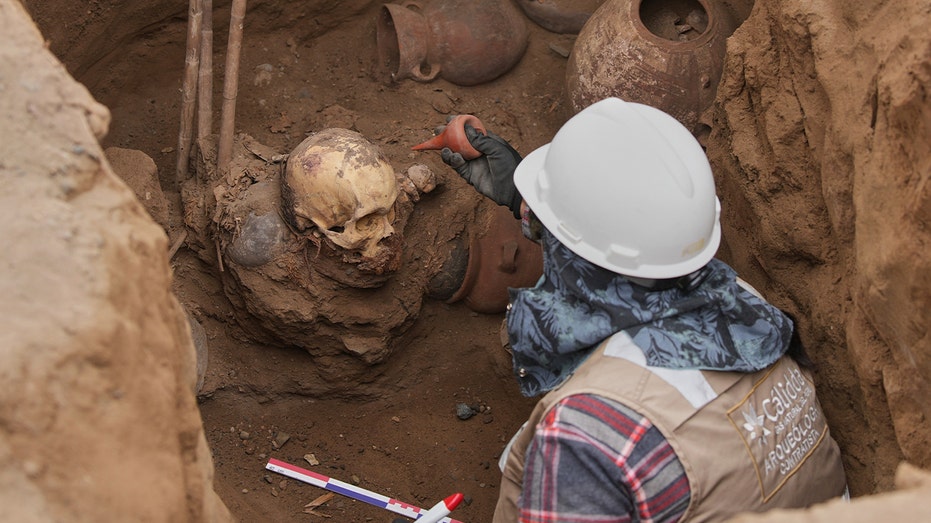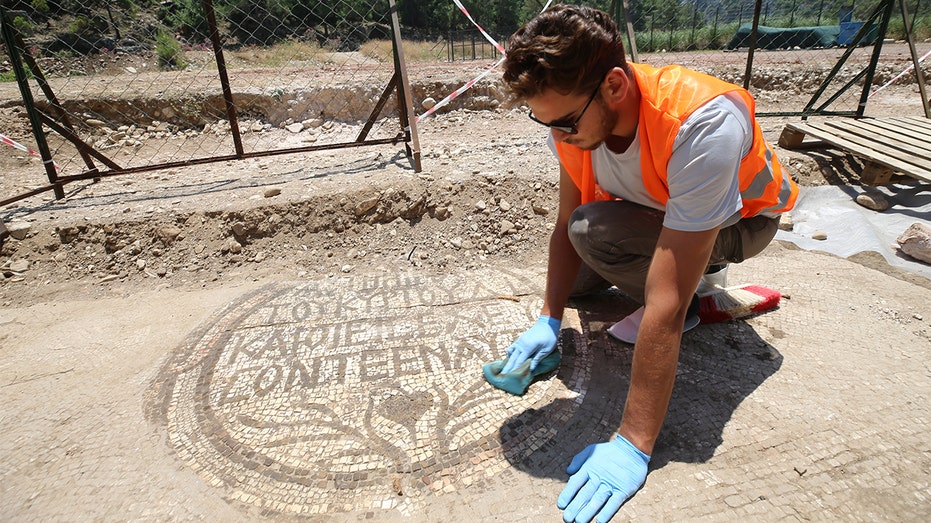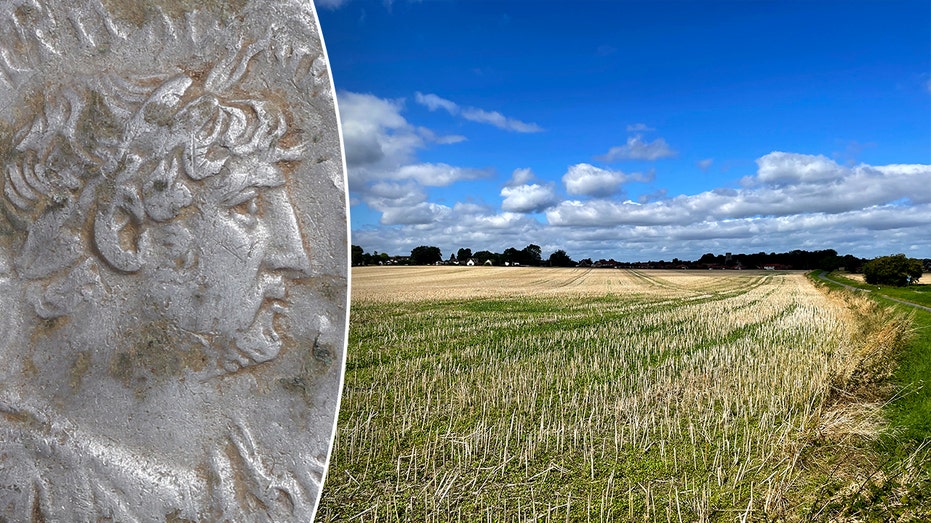Decoding the Canaanite Blade Factory: Beyond Biblical Ties to Societal Complexity

Sarah Johnson
August 12, 2025
Brief
Analysis of the Canaanite blade factory discovery reveals insights into societal complexity, economic organization, and craftsmanship during the Early Bronze Age, challenging traditional narratives.
Opening Analysis
The discovery of a 5,500-year-old Canaanite blade factory near Kiryat Gat, Israel, transcends a simple archaeological find. It offers a tangible glimpse into the societal organization and technological prowess of the Canaanites, a civilization often relegated to brief mentions in biblical texts. This factory wasn't just a site of production; it represents a point of complex societal organization and specialized labor essential for urban development during the Early Bronze Age.
The Bigger Picture
The Canaanites were a Semitic-speaking people who inhabited the Levant (modern-day Israel, Palestine, Lebanon, and parts of Syria and Jordan) during the Bronze and Iron Ages. Often portrayed in the Bible as adversaries of the Israelites, their history is richer and more nuanced than religious texts suggest. Archaeological evidence shows that the Canaanites were not a monolithic entity but a collection of city-states with unique cultures and economies. Understanding their material culture, such as this blade factory, is vital for reconstructing a more complete picture of the ancient Near East. The Early Bronze Age (c. 3300-2000 BCE) was a pivotal period of urbanization and social stratification in the region. The emergence of specialized crafts and industries, like blade making, reflects increasing societal complexity and the need for organized production and distribution systems.
What This Really Means
The blade factory's significance lies in what it reveals about the Canaanite economy and social structure. At a time contemporary with the dawn of civilization in Mesopotamia and Egypt, the Canaanites were developing their own sophisticated systems. The uniformity of the blades indicates a level of standardization and quality control suggesting a conscious effort to meet specific demands, possibly for both domestic use and trade. It points to the existence of a structured economy where specialized labor was employed, and goods were produced on a scale beyond simple household needs. Furthermore, the factory suggests that advanced knowledge of flint knapping, which required skill and training, was important. The designation of 'exceptional individuals' further highlights the craft's prominence, suggesting these artisans held a special position within their Bronze Age society. This sheds light on the distribution of skills and knowledge which is critical for understanding social hierarchy and specialization in ancient societies. Beyond economics and craftsmanship, religious or ritual roles for these blades cannot be dismissed; they could have been crucial in ceremonies predating or parallel with established religious concepts such as those described later on within Abrahamic religions associated closely with this region.
Expert Perspectives
Professor Aren Maeir, archaeologist at Bar-Ilan University, specializing in the Early Bronze Age states, "Discoveries like this blade factory allow us to move beyond textual sources, which are often biased or incomplete, and gain a direct understanding of daily life and economic practices in ancient Canaan. The scale of production alone indicates a level of societal organization not always appreciated in traditional interpretations of the period."
Dr. Emily Teeter, an Egyptologist at the University of Chicago, notes, "Examining blade production can reveal trade networks and cultural exchanges between different regions which influenced development. In ancient Egypt the production and trade of similar tools enabled and was enabled by the development of the bureaucratic and transport infrastructure of the early Pharaonic state. These types of discoveries helps us understand how similar and different the conditions were in different parts of the ancient world."
Data & Evidence
While the specific output capacity of the factory isn't mentioned in the original reporting, similar archaeological sites suggest that a factory of this size could have produced hundreds, if not thousands, of blades per year. Analysis of the flint cores found at the site could reveal the source of the raw materials, giving insight into trade routes and resource management. Studies on wear patterns on the blades could also suggest their specific uses and the types of activities they supported, which provides information regarding food processing, construction or potential warfare.
Looking Ahead
Future research at the Nahal Qomem site could uncover additional workshops or residential areas associated with the blade factory, providing a more complete picture of the community that supported it. Isotopic analysis of the flint could pinpoint the exact quarries used, further illuminating trade networks. Additionally, comparative studies with other Early Bronze Age sites in the region can reveal whether Kiryat Gat was a major center of blade production or just one of many such workshops. Further discoveries may reveal more insight into the social structure like the division of labor, the roles of women and children, and the extent of trade and social interaction with other areas of the ancient near east.
The Bottom Line
The Canaanite blade factory is more than just an archaeological curiosity. It's concrete evidence of organized and specialized industry taking place at the dawn of the Bronze age. It underscores the need to critically examine what is described or omitted within biblical narratives. The blade factory illuminates a sophisticated society with skilled craftsmanship, standardized production and a complex economy. This strengthens our understanding of early urbanization and helps challenge simplified or biased interpretations. The discovery pushes us to better understand the Canaanites and their contribution to the ancient Near East.
Topics
Editor's Comments
This find prompts us to reconsider the Eurocentric bias often present in the study of ancient civilizations. While Mesopotamia and Egypt are frequently highlighted, this discovery underscores that complex societies were simultaneously developing in other regions of the Near East. It raises interesting questions about the interconnectedness of these societies and the degree to which technological and economic advancements were shared or independently developed. Furthermore, it emphasizes the importance of interdisciplinary research, combining archaeology with textual analysis and environmental studies, to gain a more holistic understanding of the past.
Like this article? Share it with your friends!
If you find this article interesting, feel free to share it with your friends!
Thank you for your support! Sharing is the greatest encouragement for us.
